All the way back in the first post, I told you about my travels and trials of the summer of 2024. I ever so briefly mentioned visiting and exploring some of the railroad towns along the Virginia/North Carolina border.
“I will have much more to say about these towns and this experience in the future (possibly a zine will come of it),” I said, long ago.
The future is now! And a book has come of it. [You can get it here.]
I’d like to tell you all about it, but I don’t want this just to be some commercial for the new book (which is called Outsider, and I’d love for you to see it). So, instead of just hawking the book, I’d like to take you through the process of how I produce a photography project. Every project must start with a plan.
The Plan
When I travel, I do so based almost entirely around photography. Every stop, every road, every minute of sunlight of every day is about what I can shoot, how, and when. Obviously, I can’t plan for everything, and last year’s trip humbled the hell out of me. But when I plan, I pretend that the plan will not go awry.
The bulk of this trip was about cemeteries. For the most part, I ignored the towns, focusing instead on the roads I could take between one old, abandoned cemetery and the next. I figured maybe I could shoot something along the way. It’s a method that has served me well for as long as I’ve done it.
There was one section, however, where I wanted to focus on the towns themselves. I used to do this almost exclusively – plan to drive the most interesting roads from one town to the next – and so falling back into that was simple.
I discovered these towns for myself through my friend Bob, a fellow photographer and traveler. He was able to capture these towns, focusing mostly on the railroads, but exploring the downtowns and sidestreets as he went. His photos reminded me enough of the ones I used to take, and I wanted a bit of that for myself. Along with Bob’s suggestions, I used Google Maps to solidify my plans.
My planning of this area became one of the main focuses of the entire trip. So much so that I wanted to make this an entire project, with a book for the photos and short essays about the history of each town. I’d center it around the railroad (Bob isn’t the only one with an interest in trains; mine dates back to before I can remember) and pick up whatever other history might be lying around.
I selected the towns based on where the railroad was or had been. I simply followed the track on the map and noted each town. I then looked through Bob’s photos for that town (he has shot almost all of them) and then decided if it looked like a place where I could make something happen.
Of course, the thought of plagiarism was bouncing around my head much of the time. What was the point here? What was I doing? But I wasn’t just copying Bob. We see things in different ways. Even if we had shot together, the results would be almost like we photographed separate towns.
I would start in McKenney, Viriginia along the I-85 corridor and move south, zig-zagging through places like Stoney Creek, Capron, and Boykins, before crossing the line into North Carolina for Rich Square, Aulander, Robersonville, Rocky Mount, and Roanoke Rapids. I’d end by trailing off west with Henderson, Oxford, and Roxboro.
The Gear
There are some projects that demand an almost chaotic array of photos, taken with various cameras or lenses, a multitude of styles, and as many different emulsions as possible: color, black & white, and numerous samplings of all of them.
For this project, however, what I wanted was uniformity. Every photo wasn’t to look the same, of course. I’m neither Bernd nor Hilla Becher here to create a typology of small southern railroad towns. But still, I wanted it to all be of a piece.
What I expected from the middle-south in July was heat, humidity, and sunshine. I keep saying I’m moving away from color, but it keeps dragging me back. And so color it was. I had recently received about twenty rolls of Kodak Ektachrome E100S which expired in July of 2002, nearly 23 years ago. I had already used a roll or two, and knew it was good, and knew it was well-behaved in how I develop color.
I develop all of my color film using the ECN-2 process. I make my own kits from raw chemicals. I even sell them and you can buy them, but this isn’t a commercial.
My go-to camera is a Mamiya RB67 with a 90mm lens, one of the early lenses shaped like a bell with less coating than the newer ones. It’s a camera that makes a statement, but it’s also my daily driver. I considered running the film through a 1912 Kodak Brownie box camera, but I thought it would be a better idea to have some sort of control over the exposure. I will never know if this was the right decision. But that’s how projects work.
The Execution
But that’s also not how projects work. Projects change over time, over the course of doing them. When planning, we have to be rigid enough to stick to our project but flexible enough to change and adapt rather than giving up.
I had spent too much time in Pennsylvania, and I knew I would have to cut parts of the trip short, but I wanted to keep the Virginia/North Carolina portions intact. My original plan was to explore a bit of the Blue Ridge Mountain towns, but I cut that to save this.
My first night out of Pennsylvania, I camped at a private campground that I think used to be a KOA. In the west, where I usually travel, camping is often very cheap in National Forest campgrounds or free on BLM or other federal land. The East Coast is different, but I knew that going into this. The campground was expensive in comparison, and I’d have to get a hotel room or two before all this was out. This might be my most expensive photography project to date (those hotel rooms add up quick).
After setting up the tent, I headed out for some evening shots of Dewitt, McKenney, and Wesson. I was already off the original plan. In each town, I’d park and just walk around. I had noted a few landmarks here and there to draw my attention, but mostly I just wanted to see what the towns had to offer. It was a Sunday night, and every town, even the busy ones, was empty.
On Baker Street in Emporia – a town that wasn’t in my original planning – I found a colorful row of boarded-up storefronts that once were an extension of their still-busy downtown.
With each photograph I took, I was trying to think forward and back, “would this shot work with the others I’ve already taken?” It’s a question that’s fairly unnecessary to a project, but I find myself editing on the fly, and it feels right for me, so I usually go with it.
The sun was near setting, so I returned to my car, and then to my tent, and then to sleep.
The next day was the biggest. Like any day I travel, every minute of light is a minute when I’m working. I rarely take breaks, and often have to force myself to stop for lunch. I did not eat lunch this day.
I collected a few shots in a few towns early, but nothing really seemed to be working at first. I couldn’t find my place in the day, and was getting a little worried.
On my list was the Nat Turner memorial. There was nothing to photograph here, but I just wanted to see it. In 1831, Nat Turner led a slave revolt that scared the hell out of the country. It lasted for four days before being put down by the military. When I drove to the spot of the memorial, I found nothing at all. With a sigh, I moved on, crossing into North Carolina.
In Conway, I found small cottages along Church Street. There was a story here, but I couldn’t tell what it was. Were these repurposed company houses built by the railroad? Whatever the history, the morning light was beautiful upon them.
I drove, walked, and photographed my way through these towns as the sun rose towards midday and a more uniform light fell over everything.
It was mid-morning when I entered the town of Ahoskie. A quick drive through downtown showed me a thousand possible photos. I parked and spent an hour walking up and down its streets.
In some ways, I am an explorer, but I rarely take my time to truly explore a town. I rely on happenstance and planning. I don’t dig as much as I should, as much as I would like to. But here I did.
The downtown is not dead, but it has consolidated, leaving many vacant storefronts standing. It was Monday morning, and many of the shops that were still open were still closed for the weekend.
But in the window of an old storefront that was now being used as a nondenominational church, I framed the reflection of an old appliance store across the street. “Color / Zenith / Color” read the sign, not fully faded in the lifetime of sunlight it’s endured. I shot the store straight on as well. The light was wonderful.
I took a similar walk through Williamston, framing a shot of a former service station still holding to its foundation next to a 70s looking Wells Fargo building.
Nearby, in Robersonville, the town was built around the railroad, with the track splitting what was once the main thoroughfare. There, I found an aging funeral home, a barber shop that hadn’t seen a customer since the 80s, former banks and ministries. As in the other towns, they weren’t dead, but compressed. I have seen enough small towns to know that these were still very much alive.
But there was something markedly different about them. It wasn’t that something was off or I felt unwelcomed – I knew all too well what that was like; some of the towns in the west and even midwest almost encourage you not to stop. This was welcoming and friendly. There was a lived-in warmth here. But there was also a story in these towns that I just wasn’t getting.
I photographed a few more and found a hotel in Tarboro, but didn’t explore the town. After a bit of a rest, I did a late afternoon run into Rocky Mount, the hometown of jazz pianist Thelonius Monk. There was a mural of him that I wanted to see and photograph, but I had no idea where it was. This would give me a chance to explore the town on foot.
Between Hill Street and Nash, I walked Church Street, Howard, and Main, plowing my way through two rolls. I wasn’t running low on film, but the entire time, my hard limit of “twenty or so” rolls was stuck in my mind. Because of this, I turned down uncertain shots almost everywhere I went, assuming that nothing could be made out of them later.
I finally found the Monk mutual and took three or four shots of it. Photographing a mural is weird. I wanted to incorporate it into a larger context but didn’t want to lose the details. I shot low and grabbed some of the parking lot as foreground.
That night, after returning to the hotel, I examined the day. The story I wanted to tell, that of an area built upon railroads until abandoned, wasn’t there. I mean, it was, that story was there. But that’s not the story of the towns today. I started to try to figure out how to put it together.
As I walked the streets of these towns, I realized that I was the minority here. These are almost exclusively black towns. The businesses are black-owned, and the customers are mostly black, especially in the smaller towns.
There was a story here, to be sure. But this white guy passing through essentially as a tourist isn’t the person who could tell it.
As a person of privilege – a straight white guy – I can often tell whatever story I want about whichever people I choose, and nobody raises an eyebrow. It’s normal for people like me to do whatever the hell we want.
But here, the true reason why it’s not my story was perfectly clear to see. It wasn’t some theory in a classroom, some warning in a book. This wasn’t my story because I knew nothing of its origin, nothing of how this came to be. I knew nothing of their lives, nothing of their history. And in the short amount of time I had to spend in these towns, a quick Google search and a Wikipedia article or two wasn’t going to suffice. This wasn’t my story because the actual story deserved so much better than me.
I lay in bed and breathed a hearty “well fuck, what do I do now?” I didn’t end the project there. Maybe I should have.
The next day, I hit a few towns in the morning, enjoyed the lovely light, photographed a roll or two, and then continued west towards Kentucky and the rest of my trip. My air conditioning went out the previous day, and my nausea had been in various states of intensity. I was exhausted and had thousands of miles to go. But this project, or whatever it was now, was finished.
Now Home
And 3,000 miles later, I was home. Between recovering from the trip and work, I developed the 50 or 60 rolls of black & white and color film. I developed the hundred or so sheets of x-ray film I used to photograph the hundred or so cemeteries I explored on the drive back. I developed everything except the twenty rolls of Kodak Ektachrome E100S, which expired in July of 2002, now a little over 23 years ago.
I sat on these rolls, turning over the story and the project in my mind. August went by. September and October, too. I talked to a few friends and photographers about this project and how I couldn’t see a way through. Some folks suggested having writers from that area tell the story. It’s a great idea, but far beyond anything I could put together for a book that (let’s face it) will only sell 50 or 60 copies at best.
And that’s another aspect of it I considered while not developing the rolls. Who was this for? But then, who is any project for? Ask any photographer, any artist, why they’re doing a project, and they might give you some pretty words wrapped up in an artist statement, but in the end, the project exists because they want it to. There’s nothing wrong with that. We create for a nearly endless volume of reasons, but in the end, it’s because we enjoy it – or at least we don’t hate it enough to not do it.
November went by. Then December. Developing all these rolls over the holidays would be pretty pointless, and I still had no idea what to do with them. And so, the rolls languished in my fridge.
The more I thought about it, struggled with it, tried to ignore it, the more I resigned myself to the idea that nothing would come of it. I’d develop the photos sometime (or not), share a few, and then move on with my life.
Resolving to do nothing actually freed up my brain to do something. But then January slipped away. It had been months since I developed the last photos of my trip. Because I was in various stages of sickness through most of the autumn and winter, I shot nothing over that time. If I opened the fridge, the rolls were there, in a plastic bag, waiting.
February was half a year since my trip. The film was half a year more expired. At this point, I wasn’t sure there would even be much left of the latent images to develop.
The Photos
As I mentioned, I develop my color film using my ECN-2 kits. Most color film uses the C-41 process. ECN-2 is somewhat similar to that, but it is for color motion picture film. Kodak Ektachrome is slide film, requiring the E-6 process to make them slides, transparencies.
I develop all my color in ECN-2 because, for me, it’s cheaper. But also, I like what these chemicals do for the color film I use more often: expired. It cuts fog and boosts contrast and saturation. It also kills a lot of color shifting that can happen over time. I don’t know how it does it, and I don’t really care.
When it comes to slide film like Ektachrome, it can be a mixed bag. Slide film can be finicky when it comes to exposure. Regular color film has a very wide latitude, a huge tolerance. You can over or underexpose by quite a bit in either direction, and you’ll still get a very lovely photo. This is not true with slide film.
I developed my first roll of the Virginia/North Carolina photos in early February. When I pulled the roll out of the tank, I found that the photos were dull, poorly exposed and/or damaged from the heat or the effects of time. Almost nothing would be usable. And, if these effects were true for the rest of the rolls, I’d come away with nothing. But that was okay with me since it made the project decision much easier. No photos = no photo problems. It wouldn’t matter if it wasn’t my story to tell if there were no photos with which to even attempt a telling.
Still, I had to keep going. I developed a few more rolls, and these were surprisingly vibrant. There was some good stuff here. A few more, and I realized that the first roll’s blandness was an outlier. I might have something here after all.
But then could I? Even if every single photo on every single roll was perfect, what did I have? What could I do with it?
I shared a few on social media and got a better response that I thought that I would. Even the algorithm seemed to like them. But I was still uneasy. I knew the photos looked fine, but there was something else I noticed.
Once all of the rolls were developed and I could look at all the photos in one place, I realized that I failed to capture a story. Obviously I couldn’t capture or tell the story of the people who live in these towns. But I couldn’t even tell the story of my travels through them. Everything was jumbled.
I was keeping track of the rolls as I shot them through a numbering and lettering system, and at some point along the way, I lost track. I could piece them together (and have), but even then, there wasn’t some sort of narrative I could follow. And what would I say? If I couldn’t tell the history, what was there to tell?
With all of the photos in one place I looked and realized that there is no story here. There are photos and there are some good ones, but there’s no narrative. There is, however, a nice book. These places are beautiful little towns. Even in their closed businesses and abandoned downtowns, there’s a beauty that needs to be shared.
The story is in the towns themselves, and maybe that can’t be seen or even told outside of the area. But the beauty can, to the best of my abilities, be shown.
The Book
What I mean when I say “it’s not my story to tell” is that I would be the wrong translator to tell it. Nearing the end of the project is not when you hope to decide its fate, but sometimes you have to be willing to take the chance, see a project through to the end to even see if there’s anything there.
With a photography project, where we’ve gone through the process of taking hundreds of photos of scenes we may never be privy to again, we have to work with what we’ve got. If it’s nothing, then it’s nothing, and we move on. But here, there was something.
Sometimes, we can piece together a story of some kind using only the photos. We are creatures of narrative. We have related stories probably since before we evolved into homo sapiens. And we’ve likely been making up stories for nearly as long.
While the original story idea is gone from my book, there is a book (otherwise, I wouldn’t be talking about this). And in a way, it’s a work of fiction. These places all obviously exist. I’ve doctored no photo in any untruthful way. But the manner in which they’re placed together isn’t how they exist in the factual world. There is a truth to this book, but there are no facts here.
A local photographer with ties to the towns could produce something more impactful, could tell the story. But I’m just me. The story I could tell of it would make no sense at all. It would not only not be factual, but it would also not be truthful.
The book I produced is called Outsider. It’s not because I was made to feel like an outsider in these towns. Everyone I met was warm and welcoming. There’s a part of me much larger than I want to deal with who would love to live in these towns, among their residents. I was never made to feel like I shouldn’t be there. But I was an Outsider. It’s not a bad thing, it’s just the truth.
I laid out the book in a couple of afternoons. I don’t enjoy mulling over the placement of every single photo, spreading out prints on the floor and pretending all that matters to such a degree. Or maybe it just comes naturally to me. I create a book or a zine in a burst or two of sessions.
For this book, Outsider, I used full, uncropped photos on the right side. For the left, I selected details of other photos, focusing on the intricate rather than the overview. This allowed me to see things in the photos that I often didn’t notice when I was taking them.
It allowed me to work with juxtaposition, playing one photo off another, creating a bit of conflict or kinship where it would otherwise not be. I suppose this is the fictional part of the book.
The photos are not placed in anything resembling chronological order. It’s not that kind of book. This is a collection for you to take in and enjoy or not. It is not to tell you a story, at least not a coherent one. If you find a story here yourself, I won’t begrudge you.
If you’re interested in buying the book, I have made it as inexpensive as possible. It is a small book, roughly 5” x 6” and 100 pages. All color. If you have seen a copy of my previous book Fall Silent, it is the same size.
But the real story is not in the book, but in the towns themselves, and if you ever find yourself on the border of Virginia and North Carolina, I urge you to get off the interstate and uncover this for yourself.
[You can pick up there book here.]




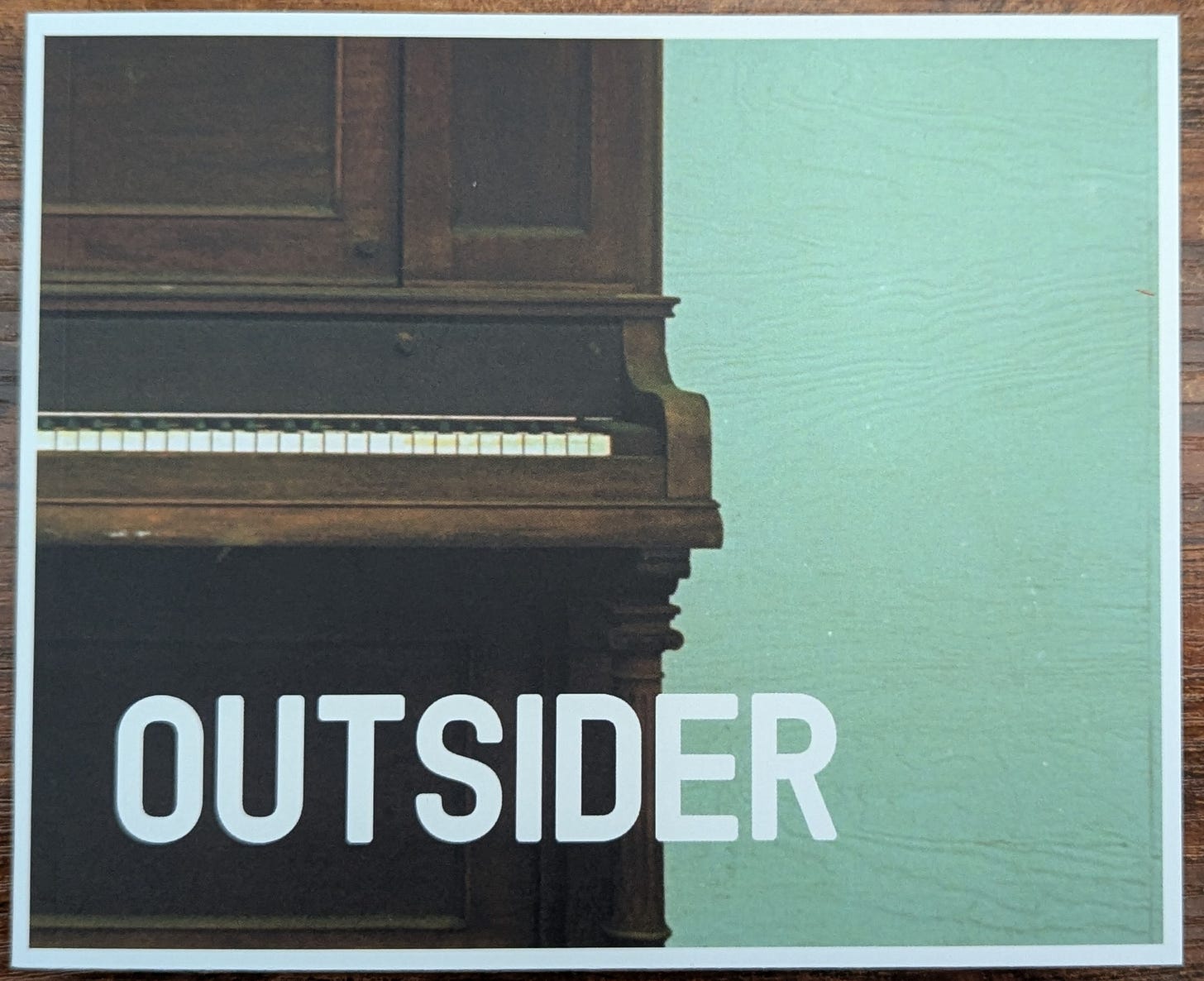
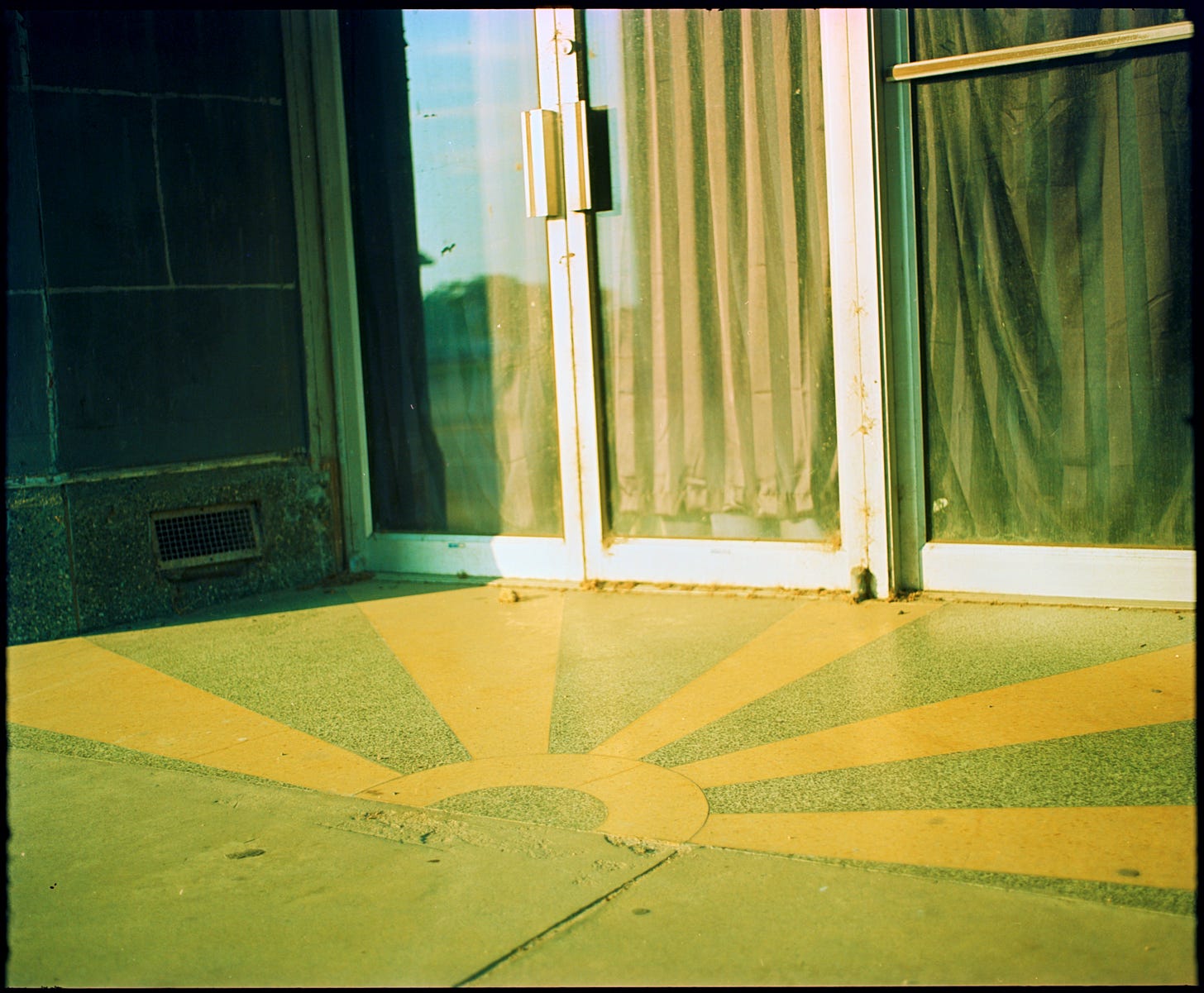
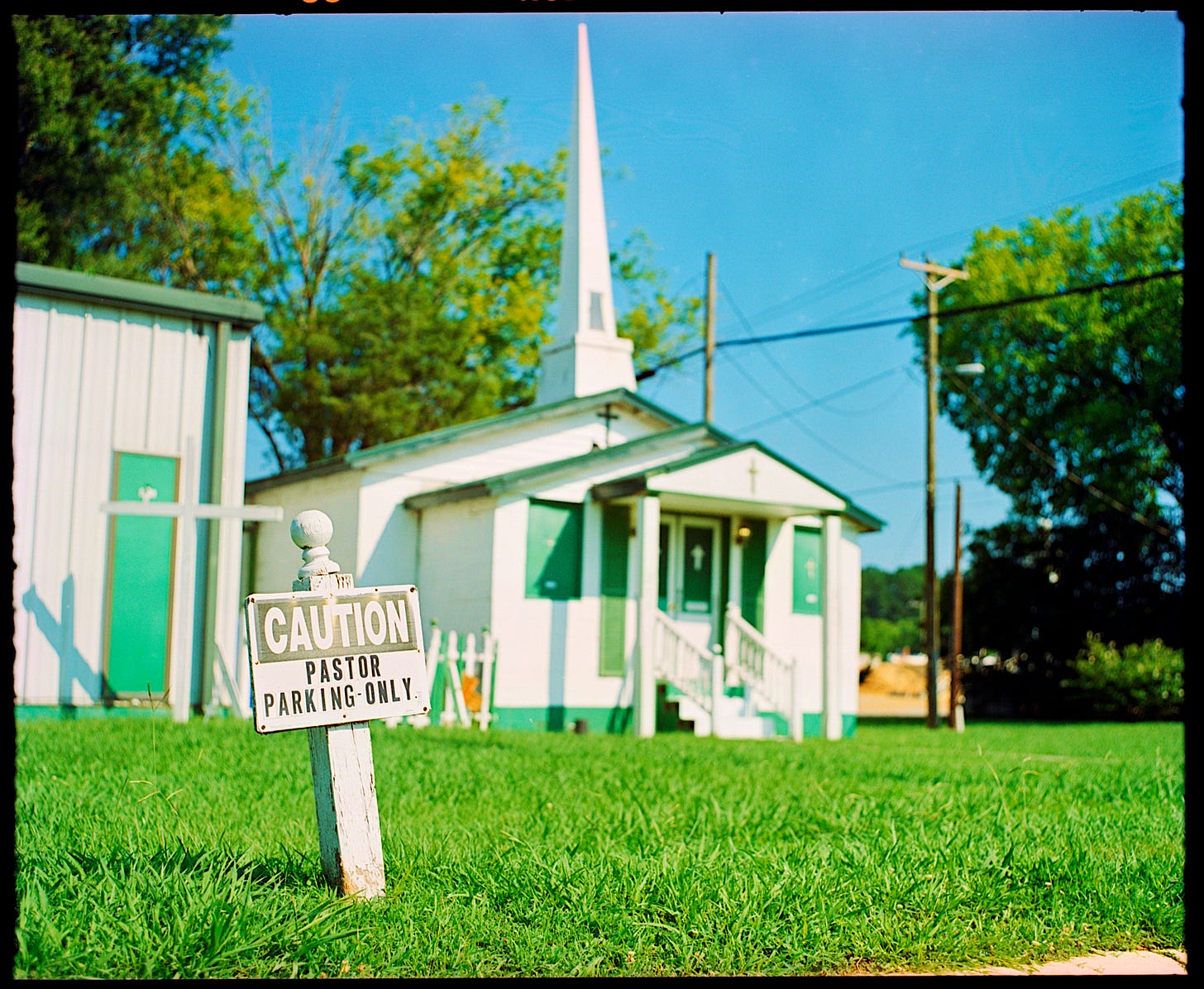
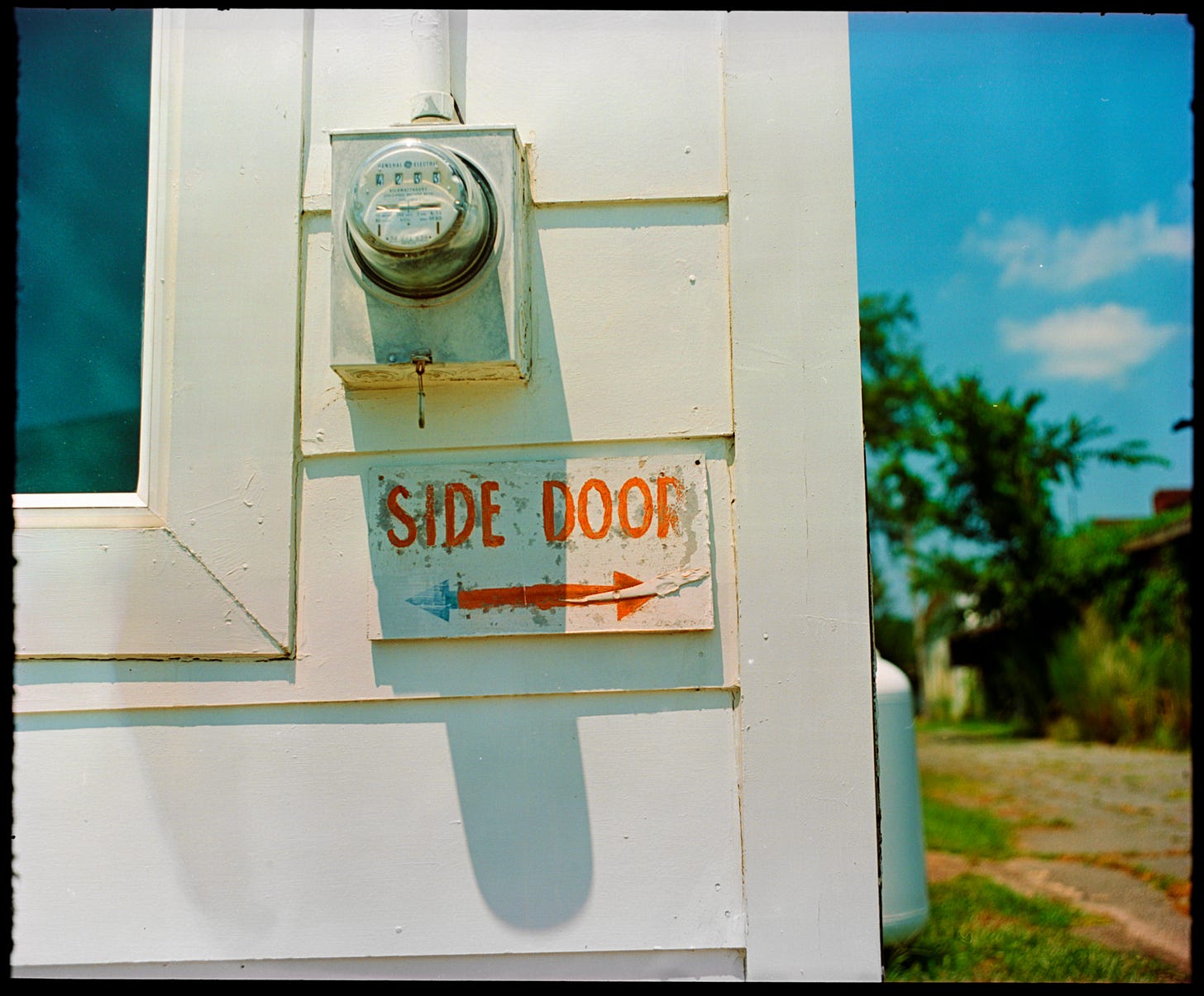

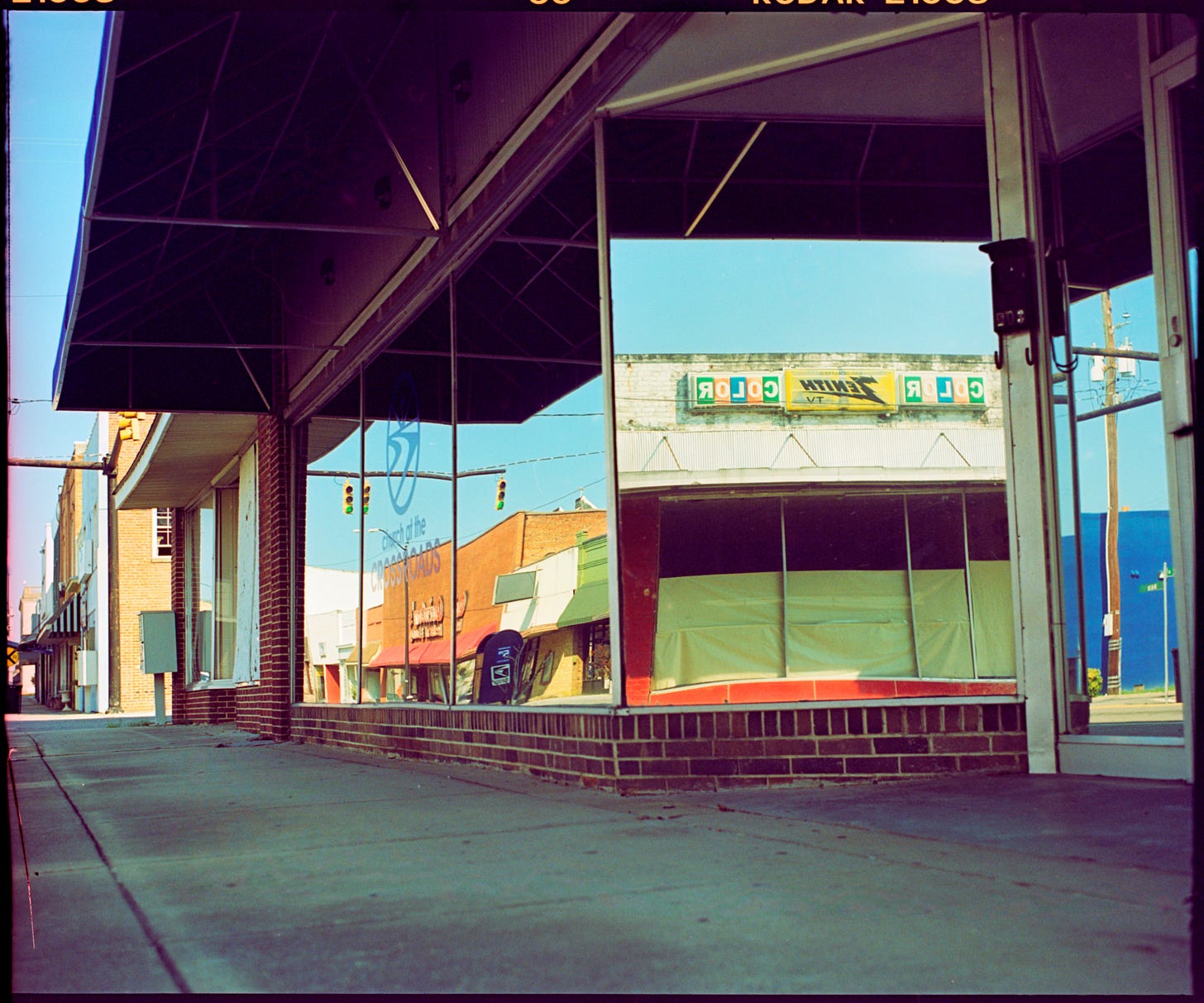

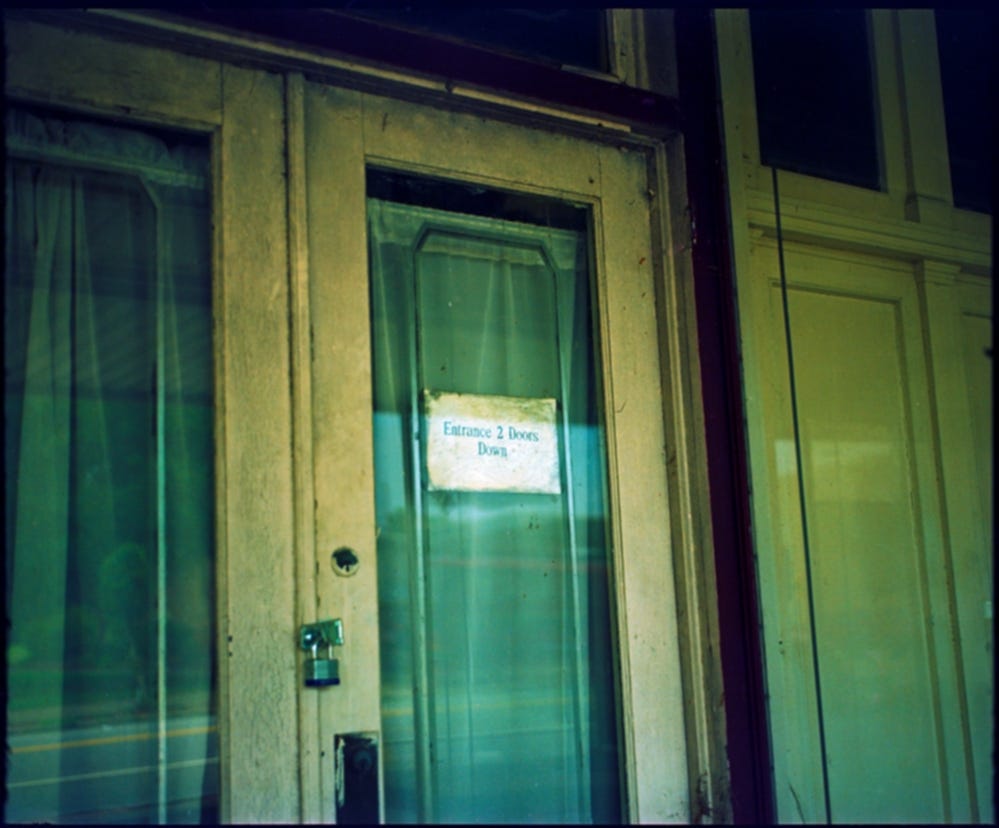
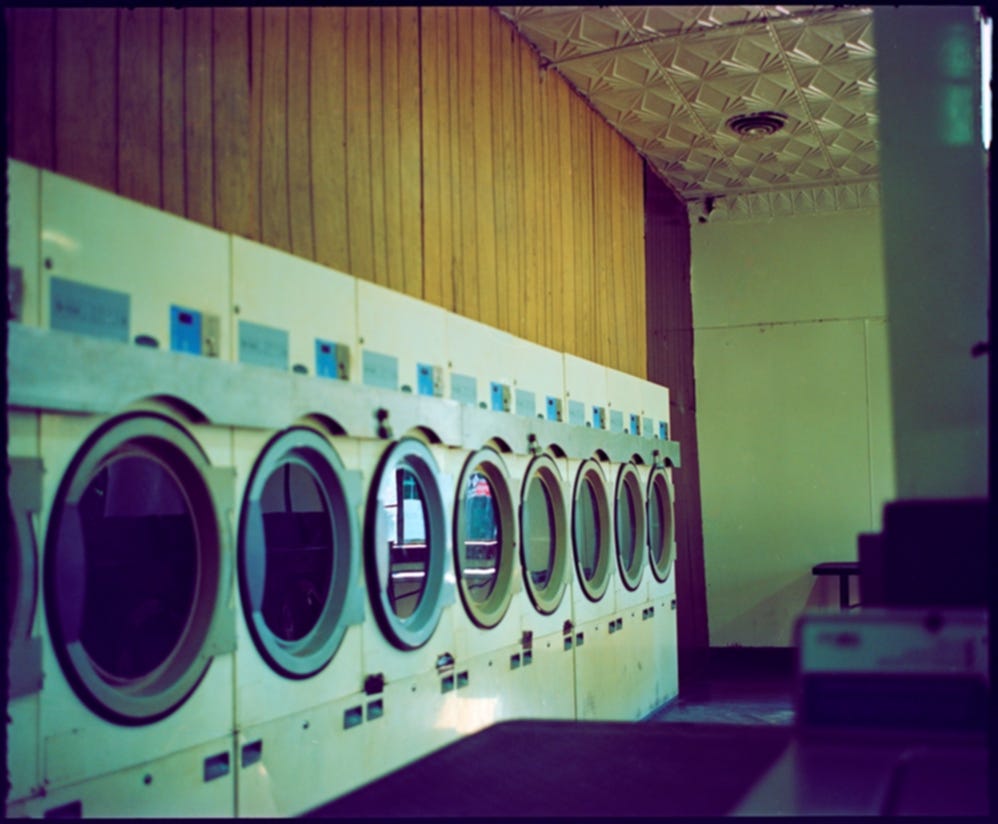
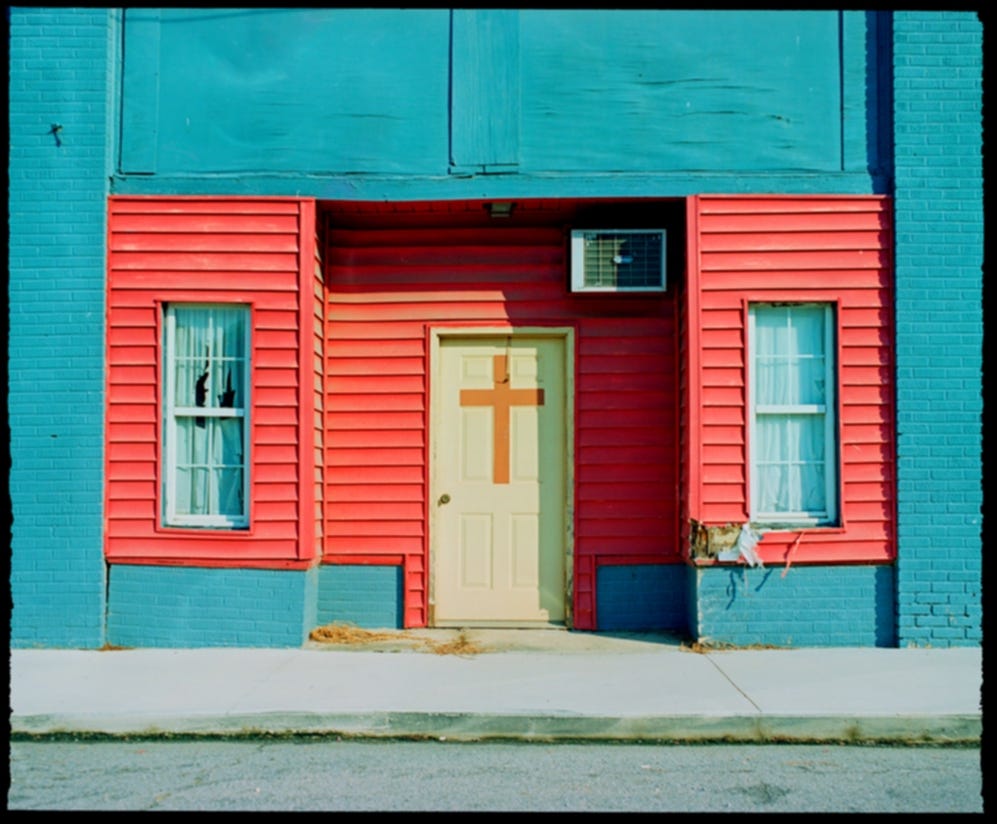
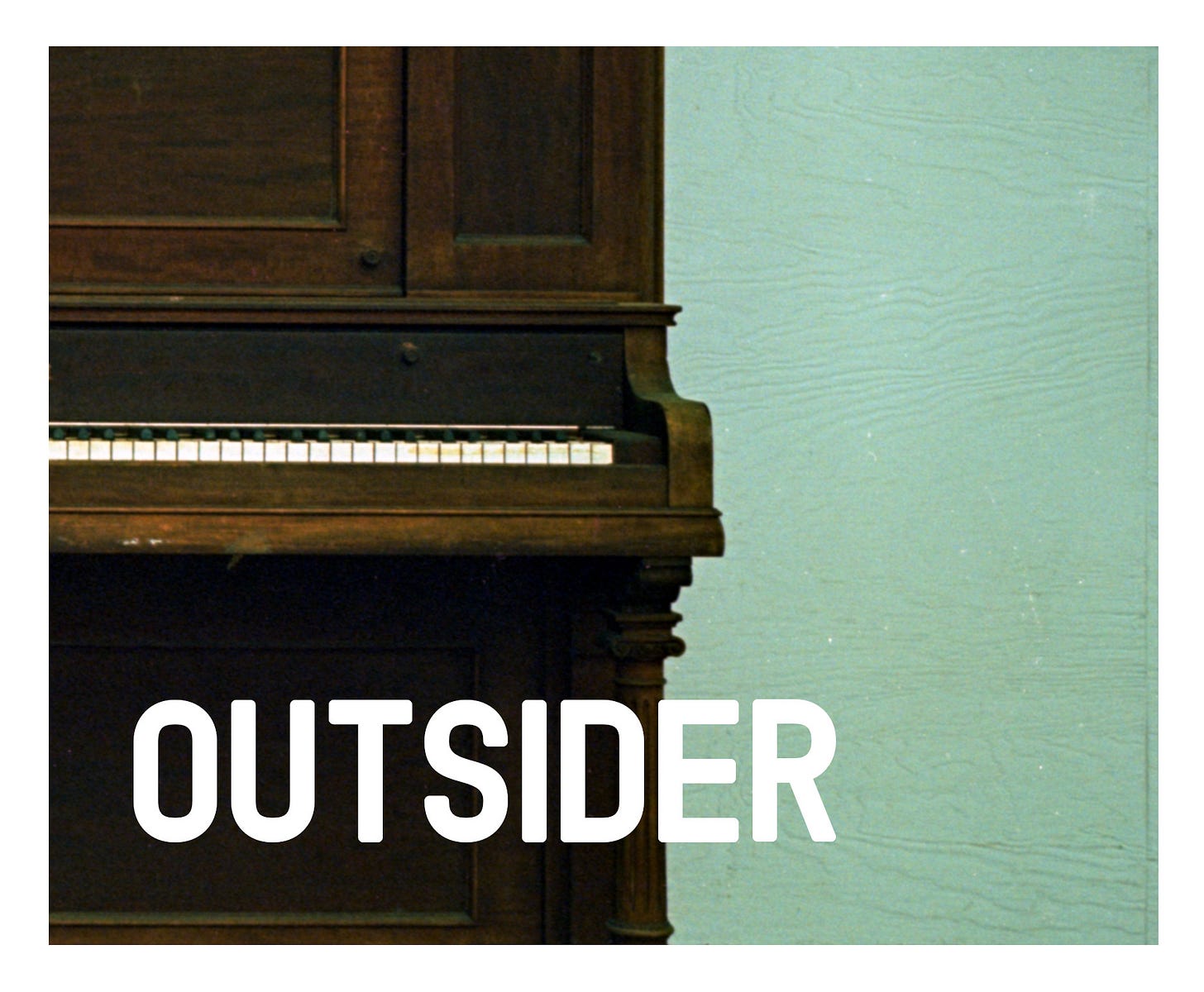





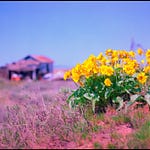
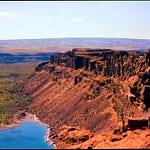

Share this post